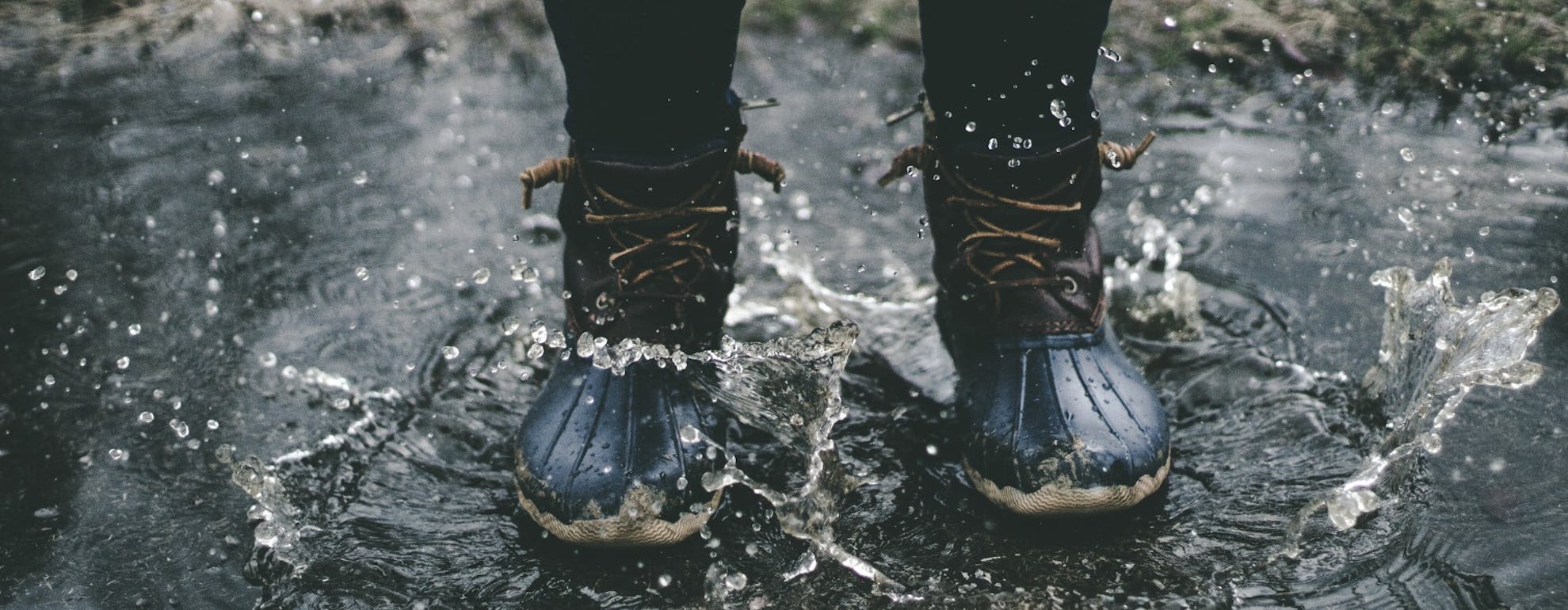
How to Hike in Horrible Weather
You’ll often find yourself at the mercy of unpredictable weather on the trails and hills. Whilst trail running, pleasant, sunny conditions can often change dramatically as you head into the hills and exposed areas. If you love trail running, the chances are you aren’t going to let bad weather stop you from heading out, and you might even find it makes for a more exhilarating experience.
Here’s how to stay warm, dry and comfortable, whatever the elements throw at you;
ㅤ
STAY DRY
Make sure you’re wearing appropriate kit as you don’t want to feel cold and rain-sodden on a long run. Biting winds, steady persistent rain or sleet, and the slower pace of trail running can also cause a sudden drop in body temperature so be prepared.
ㅤ

ㅤ
TAKE A JACKET
When you’re out on the trails, the weather has the potential to turn, so you should always pack a lightweight, waterproof jacket, this is now an FRA requirement in all mountain marathons. This no longer means lugging around a heavy jacket - the latest high tech fabrics are now ultra-light, breathable and easily packable as well as being fully waterproof (see Montane’s Minimus Jacket). Look for fully seamed seals, waterproof pockets and make sure your jacket has a hood – water trickling down the back of your neck defeats the object of staying dry.
If the weather’s looking particularly bad, you can also waterproof your bottom half (see Ronhill’s waterproof Tempest Trail Pants) or look for tights with water resistant DWR coated fabric and panels which will help water roll off the fabric. You can also try layering waterproof shorts over tights to help keep the worst of the rain out, without overheating or the added bulk of full length waterproof pants.
ㅤ

ㅤ
DON’T FORGET YOUR FEET
The best way to keep feet dry is with shoes that are fully waterproof. Look for trail shoes with waterproof coatings and membranes such as Gore-Tex, which will keep water out, but allow your feet to breathe (see Salomon’s Gore-Tex Speedcross).
If you’re on a budget, the next best option is to look for trail shoes with open weave, fast drying mesh uppers which allow water to evaporate quickly. This also is the best option where you’re likely to be running through deep water or through very deep, boggy mud and water is likely to go over the top of the shoe - you don’t want it trapped inside by a waterproof membrane. You should also wear thin, high wicking socks which will wick away water quickly.
ㅤ

ㅤ
KEEP WARM
When you’re venturing into high level, exposed areas, you’re inevitably going to experience wind chill. Wear technical wicking fabrics that can be easily layered and adjusted with zips. This is where on cold days you might also want to think about an introducing a thermal base layer which traps warm air and helps to insulate the body, while still wicking away sweat and moisture.
A windproof outer layer will also help to keep the chill out. Look for fabrics such as Windstopper which are guaranteed to be totally wind proof. Also look for winter tights which feature Windstopper laminate panels on the exposed thigh areas, which help keep rain and wind out and your core temperature up.
ㅤ

ㅤ
HAT, GLOVES AND A NECK GAITER
Accessories are easy to forget but make all the difference when you’re battling the elements. A thermal hat will help keep your head and ears warm in biting winds and look for gloves which are thermal, wind and water resistant. A neck gaiter is totally versatile (see Buff’s range) and can be anything from a scarf, to an ear warmer, to a face cover or even a bandage – a must for the trails in all weathers.
ㅤ
SNOW AND ICE
Running in the snow is fun and exhilarating, but snow and ice can also be treacherous on the trails. The most important thing is to slow down, watch your footing and, unless you’re an experienced trail or fell runner, stick to routes you know well. Wear trail or fell shoes with a deep and aggressive grip. Yaxtrax snow grips, which feature metal tipped spikes and coils and fit over your trail shoes, are also a great option for packed snow and ice.
ㅤ

ㅤ
MOST IMPORTANTLY – STAY SAFE
Always check the weather forecast before you head out, and be prepared for variable conditions and sudden changes. Be mindful of the weather also impacting conditions underfoot and select your footwear accordingly. If the weather is likely to make conditions dangerous, then take a different route, or postpone your run until it clears….and always let someone know your planned route.
So, what are you waiting for? Grab your hiking boots and head for the outdoors. Your mind and body will thank you for it.
ㅤ
Are you feeling inspired? Then join our SportsShoes Strava Run Club and become part of our inclusive community.
And for more inspirational tips to become stronger, better and happier, then check out our Motivation category. Because it’s no fun standing still.
Welcome
Welcome to the SportsShoes Motivation Hub! From real-life stories, tips and inspiration, here you'll find everything you need to motivate you to keep pushing your limits and break PBs.
Read More
Share this
Featured Articles
View All